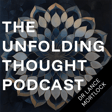
39–Rick Beato, Pace Layers, and the Evolution of Music
In this solo episode of The Unfolding Thought Podcast, Eric Pratum explores the decline of album sales in light of Rick Beato’s recent video on the best-selling albums of the 21st century. Rather than attributing the change solely to streaming or market fragmentation, Eric frames the issue through the Pace Layers model—offering a more nuanced explanation for why physical albums have faded and why that doesn’t mean music is in decline.
He walks through the origins of the album format, how it became embedded in our culture, and why innovations like streaming reshape not just delivery methods but how we define and experience music itself. This reflection goes beyond nostalgia to reveal what truly happens when old standards fade and new systems emerge.
Topics Explored:
- Why we’ll never again see albums sell like Adele’s 25 or Linkin Park’s Meteora
- The problem with comparing physical album sales to digital streams
- What Rick Beato gets right—and misses—about the music industry’s evolution
- The Pace Layers model and how it explains slow vs. fast change in culture
- How streaming disrupted not just formats, but the cultural foundations of music
- Why losing a familiar standard doesn’t always mean losing something meaningful
Links:
- Rick Beato’s video: https://www.youtube.com/watch?v=lel_J1-zxmU
- For more episodes, visit: https://unfoldingthought.com
Join the conversation by emailing Eric at: eric@inboundandagile.com



















